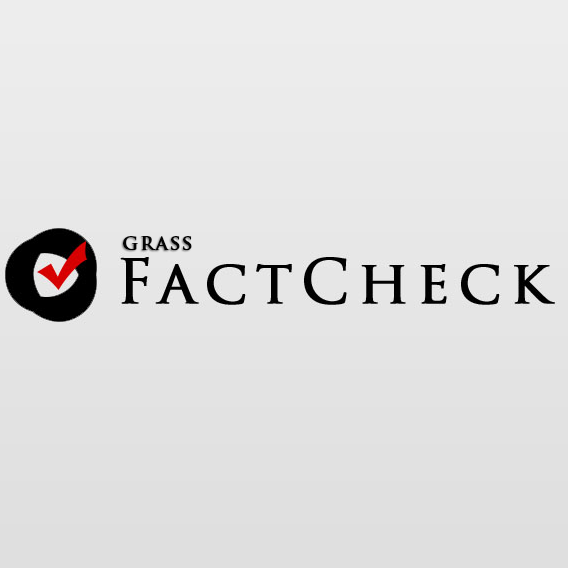Irakli Kobakhidze: “Inflation was nearly 10% over the course of this year which is a much lower figure as compared to other countries around us and in Europe, generally. In this light, a 10% inflation rate is ‘normal’ but not a relief for the population, since inflation on basic consumption products is even higher.”
Verdict: FactCheck concludes that Irakli Kobakhidze’s statement is TRUE.
Resume:
The inflation rate is measured by the consumer price index which reflects price change on goods and services purchased by an average consumer in a country. Inflation comparison between the different countries is possible in the sense that inflation is a price change of a consumer basket for an average individual, although the comparison can only be tentative and the inflation rates of different countries would be different in terms of sensitivity vis-à-vis higher prices on certain commodities.
In accordance with current data, the annual inflation rate in the EU is 11.1% which is a historic high since 1997 when Eurostat started to produce relevant statistics. Of 46 European countries (including Georgia’s neighbour states), Georgia is ranked 27th in terms of the inflation rate. Among the neighbour countries, only Armenia has a lower inflation rate at 8.8% which is 1.6 percentage points less as compared to that of Georgia. In other European countries which have lower inflation rates as compared to Georgia, inflation is still at rather high level. There are only eight countries with an inflation rate lower than 8%. The situation is particularly dire in Turkey, Moldova, Hungary, the Baltic countries and certainly in Ukraine where the annual inflation rate exceeds 20%. Against this backdrop, Georgia’s inflation rate is not relatively high.
Irakli Kobakhidze’s remark on inflation being high on basic consumption products is also relevant. As of November 2022’s data, inflation on foodstuffs amounted to 16.8% which considerably exceeds the general inflation rate and poses a critical problem for the population, especially to its socially vulnerable segment.
Analysis
The chairperson of the ruling Georgian Dream party, Irakli Kobakhidze, on air on Rustavi 2’s programme Ghamis Kurieri, stated: “Inflation was nearly 10% over the course of this year which is a much lower figure as compared to other countries around us and in Europe, generally. In this light, a 10% inflation rate is ‘normal’ but not a relief for the population, since inflation on basic consumption products is even higher.”
The current high inflation rate poses a critical problem to the population. Since January 2020 to November 2022, the general inflation rate; that is, the price level growth amounted to 28.5%. It has been over a year with a high inflation rate which persists at a double-digit level. From the beginning of 2022, including November of the same year, the annual inflation rate reached 10.1% whilst November’s inflation rate is 10.4% as compared to November 2021. It has been more than a decade since inflation rates this high have been recorded. Obviously, this reality puts the population in an especially dire situation.
There are countless factors causing inflation and the issue is often the subject of fierce political debates. Generally, moderate inflation is considered to be an acceptable event in the economy as something that accompanies economic growth. The National Bank of Georgia’s target inflation figure is 3%. However, it is a problem when inflation exceeds the target figure which is by a factor of three or four in our case. We can say with a high degree of confidence that current inflation both in Georgia and globally is largely caused by the post-pandemic situation together with different effects from Russia’s invasion of Ukraine. Restrictions introduced amid the pandemic as well as post-pandemic economic revival accompanied by the growth of the money supply in the world economy to stimulate it led to a disruption of normal processes in the economy such as the demand-supply chain.
In order to measure inflation, the National Statistics Office of Georgia annually monitors the prices of 350 most frequently consumed goods. These 350 goods are divided into 12 groups such as food and non-alcoholic beverages, transport, healthcare, etc. In different countries, the basket of an average consumer consists of different types or quantities/amounts of goods and services. For instance, food and non-alcoholic beverages, which accounts for 33.09% of the total basket, occupies the largest share in the total inflation in Georgia. This is followed by transport with 11.8% and healthcare in the third position with 9.5%. Therefore, the total weight of these three groups in Georgia’s inflation is 55%. Naturally, different countries have different goods and services in their respective consumer baskets and their weights also vary. For instance, in relatively higher-income countries, some basic goods such as foodstuffs have a lighter weight. In more developed countries, however, such as the USA, Canada and richer EU member states, expenses related to accommodation (for instance, rent) fuel and transportation have higher shares.
Given the aforementioned circumstances, inflation comparison is possible in the sense that inflation is the price change of a basket for an average consumer, although the comparison can only be tentative and the inflation rates of different countries would be different in terms of sensitivity vis-à-vis higher prices on certain commodities. For instance, the global price hike on foodstuffs was especially painful for Georgia as the UN Food and Agricultural Organization (FAO) reported that food prices jumped 28% in 2021 reaching a ten-year high. For Europe and the US, the crisis in regard to the supply and higher prices on petroleum products and natural gas was particularly difficult.
In accordance with current data, the annual inflation rate in the EU is 11.1% which is a historic high since 1997 when the Eurostat started to produce relevant statistics. Of 46 European countries (including Georgia’s neighbour states), Georgia is ranked 27th in terms of the inflation rate. Among the neighbour countries, only Armenia has lower inflation rate at 8.8% which is 1.6 percentage points less as compared to that of Georgia. In other European countries which have lower inflation rate as compared to Georgia, the inflation is still at a rather high level. There are only eight countries with an inflation rate lower than 8%. The situation is particularly dire in Turkey, Moldova, Hungary, Baltic countries and certainly in Ukraine where annual inflation rate exceeds 20%. Against this backdrop, Georgia’s inflation rate is not relatively high.
Irakli Kobakhidze’s remark on inflation being high on basic consumption products is also relevant. As of November 2022’s data, inflation on foodstuffs amounted to 16.8% which considerably exceeds the general inflation rate and poses a critical problem for the population, especially to its socially vulnerable segment.








